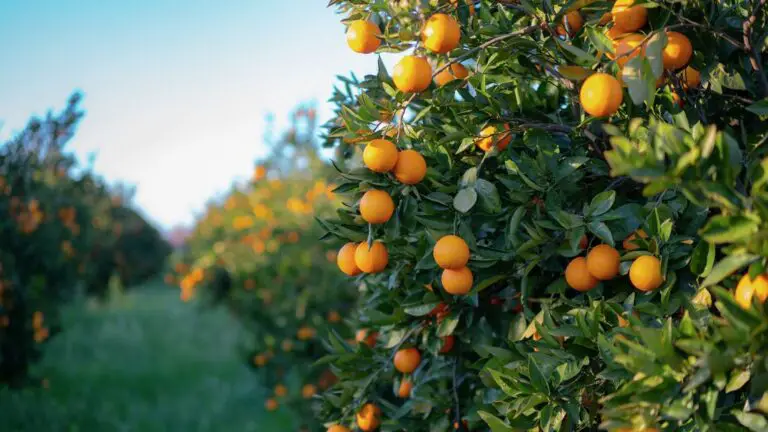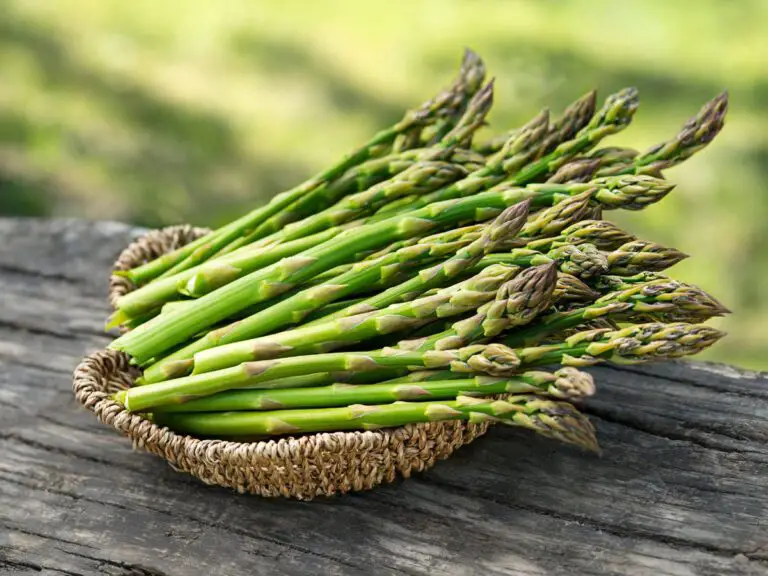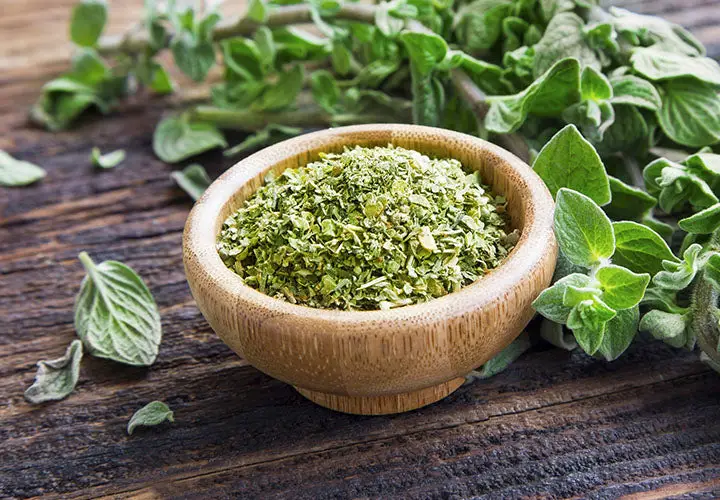Forget-Me-Not Care: Ensuring Floral Success
Table of Contents
Preparation of Soil for Forget-Me-Not Planting
Forget-Me-Nots thrive in well-draining soil that is rich in organic matter. Prior to planting, it is essential to prepare the soil to provide these delicate flowers with the optimal conditions for growth. Begin by clearing the planting area of any debris, weeds, or rocks that may hinder root development. Loosen the soil to a depth of at least 6-8 inches, ensuring a loose and friable texture that allows for proper aeration and drainage. Incorporating organic materials such as compost or well-rotted manure can further enhance soil fertility, providing essential nutrients for the forget-me-nots to flourish.
Moreover, conducting a soil test can assist in determining the pH level and nutrient content of the soil, offering valuable insights into any amendments required to create an ideal growing environment for forget-me-nots. These charming flowers prefer slightly acidic to neutral soil with a pH range between 6.0 and 7.0. Adjusting the soil pH if necessary can significantly benefit the plants’ overall health and blooming potential. By taking the time to properly prepare the soil, gardeners can set the stage for a successful forget-me-not display that will enchant and delight throughout the growing season.

Choosing the Right Location for Forget-Me-Not Flowers
Forget-me-not flowers thrive in locations that provide the right balance of sunlight, moisture, and soil nutrients. When selecting a spot for planting these delicate blooms, it is crucial to consider their preferences for partial shade. Choose an area that receives morning sun and afternoon shade to prevent the plants from getting scorched in overly intense sunlight. Additionally, ensure that the location has well-draining soil to avoid waterlogging, which can lead to root rot.
Another factor to keep in mind when determining the ideal location for forget-me-not flowers is air circulation. Select a spot that allows for sufficient airflow around the plants to prevent the development of fungal diseases. Adequate spacing between plants can also help enhance air circulation and reduce the risk of issues such as powdery mildew. By carefully assessing these criteria, you can create a conducive environment that promotes the healthy growth and flourishing of your forget-me-not flowers.

Watering Schedule for Forget-Me-Not Plants
Forget-Me-Not plants, with their delicate blue blooms and charming appeal, require specific care when it comes to their watering schedule. These lovely flowers thrive when the soil is kept consistently moist but not waterlogged. It’s crucial to strike the right balance to prevent issues like root rot or wilting. A general rule of thumb is to water your Forget-Me-Nots when the top inch of soil feels dry to the touch. However, factors like temperature, humidity, and soil composition can impact how often they need watering. Observing your plants closely and adjusting the frequency based on their individual needs will help ensure they stay healthy and vibrant.
Remember that overwatering can be just as detrimental as underwatering for Forget-Me-Not plants. These charming flowers prefer a slightly moist environment rather than constantly soggy conditions. When watering, aim to provide a deep soak that reaches the roots rather than shallow, frequent watering that doesn’t penetrate the soil properly. Additionally, consider the season and weather patterns in your area when determining your watering schedule. During hot, dry spells, your Forget-Me-Nots may require more water to thrive, while in cooler, wetter periods, you may need to scale back on watering to prevent waterlogged soil. By understanding the unique needs of these enchanting flowers and adjusting your watering routine accordingly, you can enjoy a beautiful display of Forget-Me-Nots in your garden.
Proper Sunlight Exposure for Forget-Me-Nots
Forget-Me-Not flowers thrive in partial shade to full sun conditions, making them versatile for various garden settings. Ideally, these delicate blooms prefer to receive at least 4 to 6 hours of sunlight daily to promote healthy growth and vibrant blooms. Insufficient sunlight can lead to leggy, weak stems and diminished flower production. However, in hot climates, providing some afternoon shade can prevent the plants from wilting or burning, ensuring their longevity throughout the growing season.
When considering the sunlight exposure for your Forget-Me-Nots, it’s crucial to understand the specific needs of these charming flowers. Observing how the sunlight shifts across your garden space throughout the day can help you determine the best planting location for them. Remember that adequate sunlight is essential for the overall health and blooming potential of your Forget-Me-Nots, so selecting a spot with the right balance of light intensity can make a significant difference in the success of your garden display.
Here’s a table summarizing the proper sunlight exposure for Forget-me-nots (Myosotis sylvatica):
| Sunlight Level | Ideal Duration | Notes |
| Full Sun | 4 hours daily | Preferably 4 hours of direct sunlight, but can tolerate less. |
| Partial Sun | Adaptability | Can handle day-long sun if temperatures are moderate. |
| Dappled Sunlight | Natural Habitat | Found in marshy areas with dappled sunlight. |
Remember that these delightful flowers can adapt to varying light conditions, making them a versatile addition to your garden!
Fertilizing Forget-Me-Not Flowers
Forget-Me-Not flowers, known for their delicate beauty and vibrant hues, require appropriate fertilization to thrive and flourish. When it comes to fertilizing these charming blooms, a balanced approach is key. Opt for a well-rounded, all-purpose fertilizer with equal parts nitrogen, phosphorus, and potassium to provide the essential nutrients needed for robust growth. Avoid over-fertilizing, as this can lead to excessive foliage at the expense of flower production. Aim to apply the fertilizer in early spring, just before the growing season kicks into gear, to give your Forget-Me-Nots a healthy boost.
In addition to traditional fertilizers, organic options like compost or well-rotted manure can be beneficial for Forget-Me-Not flowers. Organic fertilizers work in harmony with the soil’s ecosystem, promoting long-term soil health and enhancing the overall vitality of your plants. Incorporating compost into the soil mix during planting or as a top dressing during the growing season can provide a slow release of nutrients, ensuring sustained growth and blooming. Remember, a mindful approach to fertilizing can result in a flourishing display of delicate Forget-Me-Not blooms in your garden.
Here’s a tabulated guide for fertilizing Forget-Me-Not flowers:
| Aspect | Recommendation |
| Fertilization | Apply a balanced, all-purpose fertilizer once or twice a year in spring. |
| Alternatively, use a slow-release granular fertilizer according to package instructions. | |
| Frequency | Once or twice a year during the growing season. |
| Amount | Follow the recommended dosage on the fertilizer packaging. |
| Timing | Apply in spring when new growth begins. |
| Watering After | Water the plants thoroughly after applying fertilizer to help it dissolve and reach the roots. |
Remember that Forget-Me-Not flowers are delicate, so avoid over-fertilizing.
Mulching Techniques for Forget-Me-Nots
To ensure optimal growth and health of your Forget-Me-Not plants, employing proper mulching techniques is essential. Mulching serves multiple purposes in a garden setting, such as retaining moisture, suppressing weeds, and regulating soil temperature. For Forget-Me-Nots, organic mulches like shredded leaves or compost are highly beneficial as they decompose over time, enriching the soil with nutrients vital for the plants’ development. Additionally, mulch aids in preventing soil compaction, allowing the roots to breathe and absorb water more efficiently. When mulching around Forget-Me-Nots, be mindful not to place it too close to the plant stems to avoid potential rot or pest issues.
Remember that mulching can greatly contribute to the overall success of your Forget-Me-Not garden. During the growing season, applying a 2 to 3-inch layer of mulch around the plants, leaving some space around the stems, can significantly improve plant health and vigor. Regularly inspect the mulch layer to ensure it is at the optimal thickness, replenishing it as needed to maintain its benefits. Furthermore, avoid using excessive amounts of mulch, as this can lead to moisture retention issues and hinder air circulation around the plant roots. By adopting proper mulching techniques, you can create a favorable environment for your Forget-Me-Nots to flourish and adorn your garden with their delicate blue blooms.

Pruning Forget-Me-Not Plants
Forget-me-not plants benefit from regular pruning to maintain their shape and promote healthy growth. After the blooming season, it is advised to deadhead the spent flowers by gently pinching them off at the base of the stem. This not only tidies up the plant’s appearance but also encourages more blooms to develop. Additionally, removing any yellowing or damaged leaves can help prevent the spread of diseases and improve the overall aesthetics of the plant. Pruning forget-me-nots should be done with care to avoid damaging the delicate stems and leaves.
When cutting back forget-me-not plants, it is crucial to use clean and sharp pruning shears to make precise cuts. Avoid cutting the stems too close to the base as this can weaken the plant’s structure. Instead, aim to trim just above a set of healthy leaves or nodes to promote new growth. Regular pruning can also help control the size of the plant and prevent it from becoming overcrowded or leggy. By following proper pruning techniques, gardeners can ensure that their forget-me-nots remain vibrant and flourishing throughout the growing season.
Dealing with Pests and Diseases in Forget-Me-Nots
Forget-Me-Nots, while resilient flowers, can still fall victim to pests and diseases if not properly cared for. One common issue is powdery mildew, a fungal disease that appears as a white, powdery substance on the leaves. To combat this, ensure proper air circulation around the plants by spacing them adequately and avoid overhead watering, as moisture on the leaves can promote the growth of the fungus. Additionally, using a fungicidal spray specifically designed for powdery mildew can help mitigate the problem.
Another pest that can plague Forget-Me-Nots is aphids, tiny insects that feed on the plant sap and can cause deformities in the leaves and flowers. To deter aphids, introduce beneficial insects like ladybugs or lacewings to the garden, as they are natural predators of aphids. Alternatively, you can spray the plants with a mixture of soap and water to suffocate the pests. Regularly inspecting your Forget-Me-Nots for signs of pests and diseases and taking prompt action can help maintain the health and vitality of these charming flowers.
Here’s a table summarizing how to deal with pests and diseases in Forget-Me-Nots (Myosotis sylvatica):
| Issue | Description | Control Measures |
| Aphids | Small, soft-bodied sap-sucking insects that feed on the undersides of plant leaves. | Inspect your plants regularly and manually remove aphids. Spray plants with water to dislodge them. Watch for ants that might be farming aphids; control ants strategically. |
| Potato Flea Beetles | Seed-like black beetles that feed on plant leaves, causing discoloration and foliage death. | Cover young plants with row covers until established. |
| Slugs and Snails | Common garden pests that can cause significant damage. | Hand-pick slugs and snails at night. Dunk pests in a bucket of soapy water. Use aluminum pie pans filled with cheap beer as traps. |
| Powdery Mildew | Fungal disease causing white powdery coating on leaves. | Ensure good air circulation. Remove dead plant matter. Treat with fungicide (e.g., mancozeb or thiophanate-methyl) when signs appear. |
| Leaf Spots | Common fungal issue affecting leaves. | Maintain good air circulation. Remove affected leaves. Apply fungicide if needed. |
| Rust | Another fungal disease causing orange or brown spots on leaves. | Improve air circulation. Remove infected leaves. Apply fungicide as necessary. |
| Downy Mildew | Fungal infection leading to yellow patches on leaves. | Ensure proper spacing between plants. Remove affected leaves. Apply fungicide if symptoms persist. |
| General Tips | Monitor plant health regularly. Keep the garden clean and free of debris. Avoid overwatering. |
Supporting Forget-Me-Not Stems
Forget-me-not plants, with their delicate stems and dainty blooms, may sometimes require additional support to prevent them from bending or breaking under the weight of their flowers. Providing proper support can help maintain the plant’s aesthetic appeal and promote healthy growth. One effective method to support forget-me-not stems is by using small stakes or bamboo canes placed strategically around the plant. Gently tie the stems to the stakes using soft garden twine, allowing room for movement and growth while ensuring stability. This method helps the plant maintain an upright posture, especially during periods of heavy blooming when the stems are laden with blossoms.
Another technique for supporting forget-me-not stems is to use discreet plant cages or ring supports. These cylindrical or hoop-shaped structures can be placed around the base of the plant and adjusted as needed to provide support to the stems as they grow taller. The cages offer a subtle way to prop up the stems without detracting from the plant’s natural beauty. Ensure the supports are installed early in the growth cycle to guide the stems upwards and prevent them from sprawling or bending. Regularly check the ties and supports to make adjustments as the plant continues to flourish throughout the growing season.
Deadheading Forget-Me-Not Blooms
Deadheading forget-me-not blooms is a crucial task in maintaining the health and appearance of these charming flowers. By removing spent blooms, you not only encourage the plant to continue producing new flowers but also prevent it from expending energy on seed production. To deadhead forget-me-nots, simply snip off the faded flowers with sharp scissors or pruning shears. Make sure to cut just above a set of leaves or a bud to promote healthy growth and branching.
Regular deadheading throughout the blooming period of forget-me-nots can prolong the flowering season and keep your garden looking vibrant. As you remove the spent blooms, take a moment to inspect the plant for any signs of disease or pests. By staying vigilant and addressing any issues promptly, you can help your forget-me-nots thrive and contribute to a beautiful and healthy garden display.

Overwintering Forget-Me-Nots
When the frosty winter months approach, it’s essential to ensure that your Forget-Me-Nots are adequately prepared for the cold weather. To overwinter Forget-Me-Nots successfully, start by cutting back any dead or damaged foliage to prevent disease spread. Additionally, apply a layer of mulch around the base of the plants to protect the roots from freezing temperatures and harsh weather conditions. Remember to water the plants sparingly during winter to prevent root rot while ensuring they do not dry out completely.
Moreover, consider providing extra insulation for Forget-Me-Nots by covering them with a frost cloth or using plant covers designed for winter protection. These measures will help shield the delicate flowers from extreme cold and frost, ensuring they emerge healthy and vibrant once the spring arrives. By taking these steps to overwinter your Forget-Me-Nots, you can enjoy their beautiful blooms year after year with minimal effort.
Dividing Forget-Me-Not Plants
When it comes to dividing forget-me-not plants, timing is crucial for ensuring successful propagation. Ideally, this process should be undertaken in early spring or after the blooming season. Begin by carefully digging up the mature clump of forget-me-nots, ensuring that the root system remains intact. Once the clump is lifted, gently separate the individual plants, making sure each division has its own set of roots. Replant the divisions in a suitable location with well-draining soil, ensuring they receive adequate sunlight and water for optimal growth.
As forget-me-not plants tend to spread rapidly, dividing them every 2 to 3 years can help control their growth and maintain their vigor. By regularly dividing and replanting these charming flowers, you not only propagate new plants but also rejuvenate the existing ones. This process allows for better air circulation around the plants, prevents overcrowding, and promotes healthier growth overall. Remember to water the newly divided plants well after replanting to help them establish successfully in their new location.
Propagation Methods for Forget-Me-Nots
Forget-me-nots can be propagated through both seeds and division. When propagating forget-me-nots from seeds, it is best to sow them directly into the soil in early spring. The seeds are tiny, so a light covering of soil is sufficient for their germination. Keep the soil consistently moist until germination occurs, which usually takes around 10-20 days. Once the seedlings have developed a couple of sets of true leaves, they can be thinned to promote healthier growth.
For those looking to propagate forget-me-nots through division, it is best done in early spring or fall. Carefully dig up the clump of forget-me-nots and separate the root mass into smaller sections, making sure each division has both roots and foliage. Replant the divisions in prepared soil and water them well. Dividing the plants not only helps in propagating new plants but also rejuvenates the existing ones, ensuring better blooming in the upcoming seasons.
Here are the propagation methods for Forget-Me-Nots (Myosotis sylvatica):
Remember that these methods allow you to propagate these delightful flowers and enjoy their beauty in your garden.
Companion Planting with Forget-Me-Nots
Forget-Me-Nots are excellent companion plants due to their petite size and delicate blooms that complement a wide variety of other plants in garden beds or containers. When considering companion planting with Forget-Me-Nots, it is crucial to select plants that have similar growing requirements, such as moisture levels and sunlight exposure, to ensure the optimal health and beauty of all the plants involved.
Incorporating Forget-Me-Nots alongside spring-blooming bulbs like tulips or daffodils can create a charming early-season display, with the Forget-Me-Nots filling in the gaps once the bulbs have finished blooming. Additionally, pairing Forget-Me-Nots with taller plants like foxgloves or delphiniums can provide a striking contrast in height and color, adding interest and dimension to flower beds. Experimenting with different combinations can lead to visually appealing and harmonious garden designs that please both the eye and the pollinators that visit.
Creative Uses for Forget-Me-Not Flowers
Forget-Me-Nots are not only beloved for their delicate blue flowers but also for their versatile uses beyond just ornamental purposes. These charming blooms can be creatively incorporated into various aspects of daily life, adding a touch of beauty and elegance. One captivating way to utilize Forget-Me-Not flowers is by drying and pressing them to create stunning botanical artworks, such as framed wall displays or decorative greeting cards. Their vivid hue and dainty petals retain their allure even when dried, making them perfect for adorning handmade crafts and adding a whimsical touch to special occasions.

In addition to their aesthetic appeal, Forget-Me-Not flowers can also be infused into culinary creations to impart a subtle floral flavor and visual flair. From delicate desserts like cupcakes and macarons to refreshing beverages such as teas and cocktails, these edible blossoms can elevate the presentation and taste of various dishes. Their mild, slightly sweet taste makes them a versatile ingredient that pairs well with both sweet and savory recipes, offering a unique twist to gastronomic delights. Integrating Forget-Me-Not flowers into culinary endeavors not only showcases their beauty but also enhances the overall sensory experience, delighting both the eyes and the taste buds.
To Know More About Forget-Me-Not Care, Watch This Video!
Can Forget-Me-Not flowers be used in floral arrangements?
Yes, Forget-Me-Not flowers can be used in floral arrangements to add a delicate touch of blue color.
Are Forget-Me-Nots edible?
Forget-Me-Nots are edible flowers and can be used to garnish salads, desserts, and drinks.
How can I use Forget-Me-Not flowers in crafts?
Forget-Me-Not flowers can be pressed and dried to use in various crafts such as making greeting cards, bookmarks, or decorations for candles.
Can Forget-Me-Not flowers be used to make natural dyes?
Yes, Forget-Me-Not flowers can be used to create natural blue dyes for fabrics and yarn.
Are Forget-Me-Not flowers suitable for potpourri?
Forget-Me-Not flowers can be dried and added to potpourri blends to add a sweet, floral scent to the mix.
Can Forget-Me-Not flowers be used in skincare products?
Forget-Me-Not flowers have skin-soothing properties and can be infused into oils or used in homemade skincare products like creams and balms.






